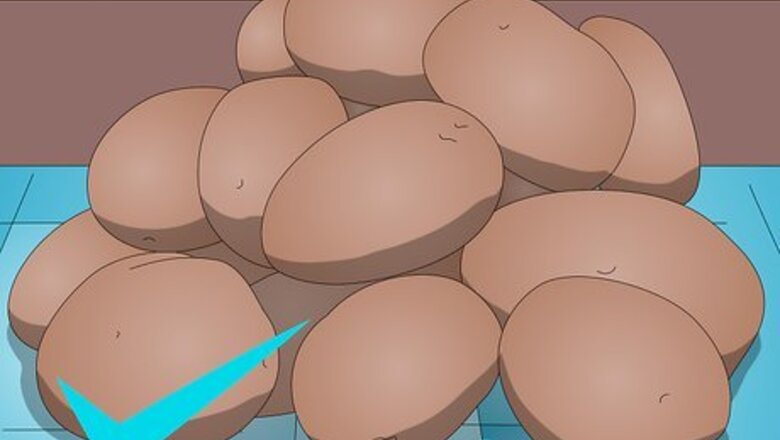
views
Cooking the Potato
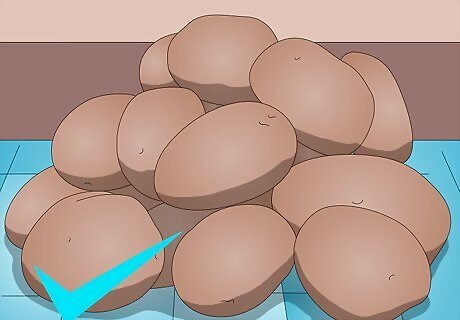
Choose a potato that is suitable for baking. Not all potatoes are created equal, with some being better for baking. It is important to pick the right size and type of potato to ensure the correct texture and flavor. Russet potatoes are considered the best potato for baking because their interior gets a fluffy texture and they can develop a crisp skin.
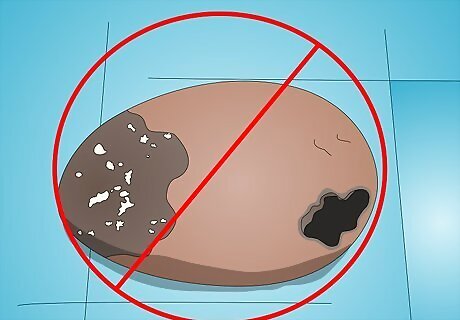
Make sure that your potato is safe to eat, checking for mold or mushy spots. Eating spoiled food can result in food poisoning. Avoid eating potatoes that appear to be unsafe for consumption.
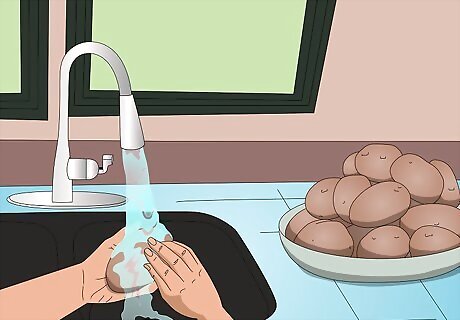
Rinse the potato thoroughly under cold water. This will remove any dirt, which can result in a gritty texture and an earthy flavor. It also keeps you from possibly ingesting any hazardous chemicals, such as herbicides and pesticides.
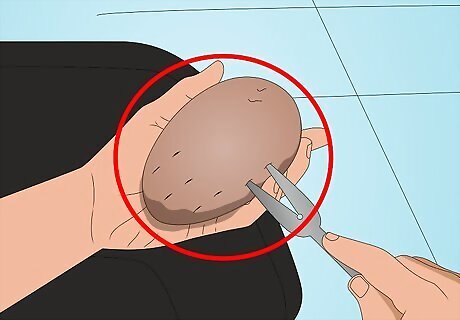
Prick the potato multiple times with a fork, rub it with olive oil, and then sprinkle it with salt and pepper. The oil ensures that the skin is crispy, while the pricking makes the inside of the potato nice and fluffy. The salt and pepper add extra flavor.
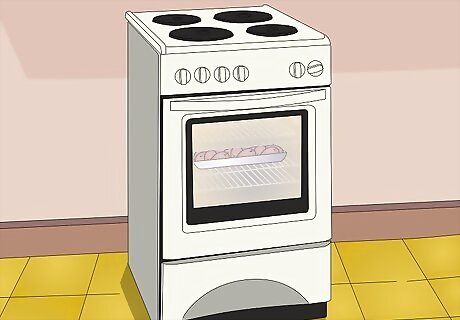
Bake the potatoes in a conventional oven. Preheat the oven to 425 degrees. Place the potatoes directly on the rack and back them for 45 to 60 minutes. Remove them once the skin is crispy and you can cut through the potato with no resistance. You can also wrap the potato in foil to create a softer skin and make sure it stays warmer for longer.
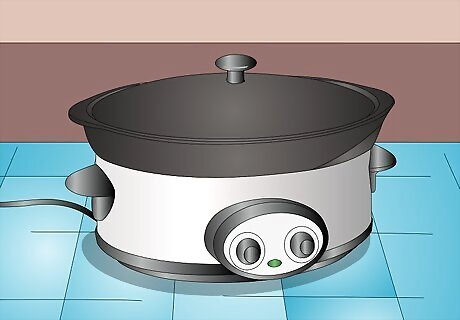
Try the crockpot as an alternative. Wrap the potatoes in foil and place them in the bottom of a slow cooker. Set the cooker on low and cook the potatoes for ten hours. This way you can have baked potatoes when you get home from school or work.
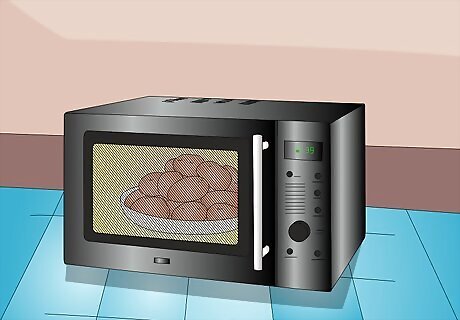
Use the microwave if it is your only option. Microwave the potatoes for five minutes on high, flip them over, and microwave them again. Serve them once they are soft all of the way through. Although quick, this method results in a soggy and, sometimes, undercooked potato.
Preparing the Baked Potato
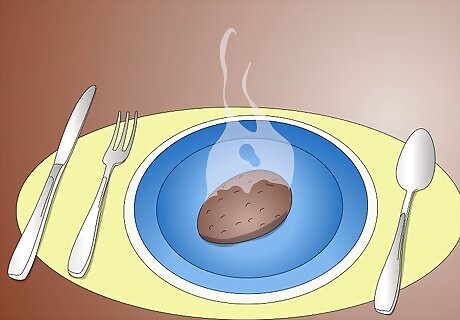
Use the appropriate eating utensils to prepare and eat the potato. A fork and knife will be needed to initially cut the potato open and later cut it up into smaller pieces to eat. You will also need a plate or bowl to eat the potato on. You may also want a spoon to scoop out the insides of the potato if you decide to mash or mix the insides.
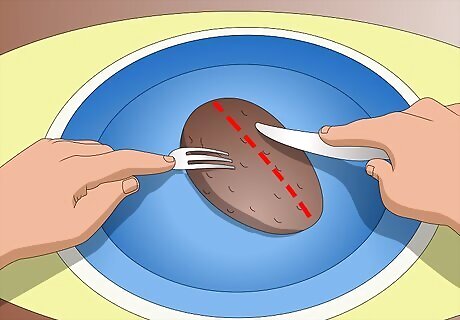
Cut the potato in half and mash in the insides. Slit the potato in half lengthwise until it is split cleanly in two. Push on the ends of each potato until the sides squeeze open. Mash the inside of the potato with a fork. If you want, you can eat the skins as well. They are good for you and add extra texture.
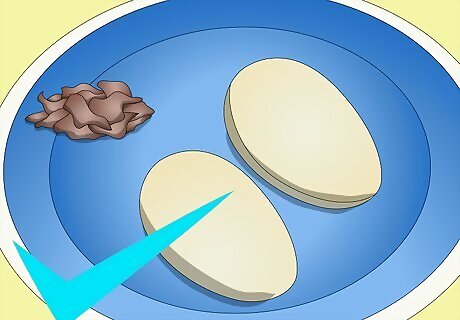
Separate the skin from the potato. Slit the potato in half lengthwise, but stop before you cut it into two separate halves. Then, use your fork or hands to scoop the potato flesh (the white part) into a pile on your plate. Mash the toppings into the pile of flesh with your fork. Grab your discarded potato skins. Butter one side of each skin. Stack them on your plate and eat them as a delicious side dish!
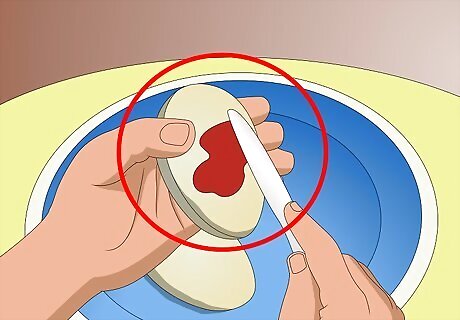
Stuff the potato with your favorite fillings. Slit the potato in half widthwise until it is split cleanly in two. You should now have two short pieces of potato with one open face. Scoop a little of the flesh off from the top of each potato. Make sure not to remove all of it; you just want to create a nice indent at the top. Stuff the indented top with your toppings, pressing until they fit perfectly into the space you just made. Put the extra flesh to the side to eat later.
Topping Your Potato
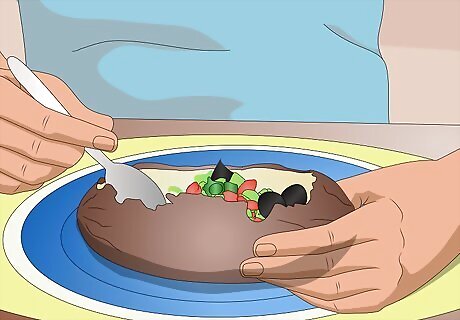
Assemble your toppings. There is not one right or wrong way to top a baked potato, with multiple recipes and topping options. Decide what sound good to you and, while your potatoes cook, prepare and organize your toppings. Depending on what you choose, this may require some additional cooking and preparation. If you are serving multiple people, you may want to create a potato bar with a variety of options. This may require more preparation, but it will ensure that your guests are satisfied.
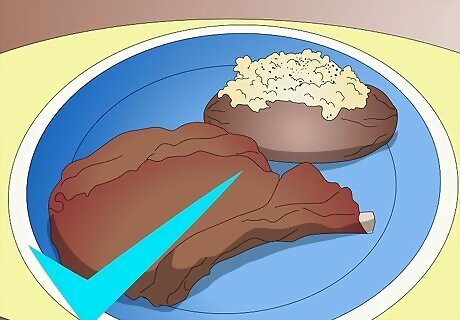
Build a traditional baked potato. The basic baked potato requires a bit of butter or margarine and a sprinkling of salt and pepper. Because it is a little bland, this style is best served as a side accompanying another dish, such as a steak or pork chop.
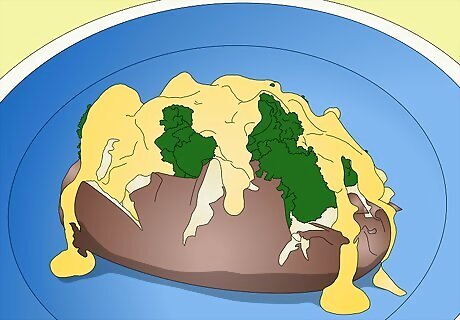
Add broccoli and cheese to the potato. Once it is prepared, top the potato with broccoli and cheddar cheese. You can either melt the cheese beforehand; let the heat of the potato melt it; or toss the entire concoction back into the oven, allowing the cheesy goodness to really melt into the spud. If you are in a rush, you can use broccoli and cheese soup as a quick substitute. You can also make your own soup and add it to the potato.
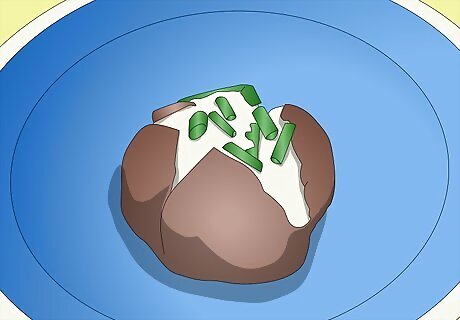
Use a dollop of sour cream and some chives. This classic topping is easy to make and takes very little time to prep. Simply dice some chives and sprinkle them on top of the potato with sour cream. Try some bacon with this dish to add some protein and a little extra flavor.
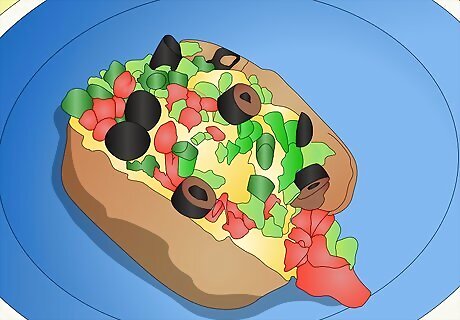
Create a Southwest style baked potato. Prepare your potato and then top it with corn, salsa, red onions, and a dollop of sour cream. You can also add pork carnitas or beef barbacoa to add some extra flavor and a little protein to the meal. Jalapenos can also add some extra spice but should be used sparingly. They add a nice complement to the sour cream.
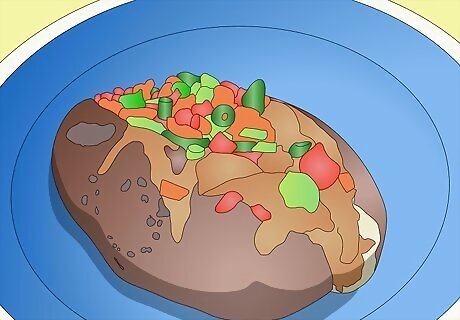
Try a Thai themed potato. After preparing your potato, cover it with peanut sauce, grated carrots, green onions, minced cilantro, and sriracha sauce. Be sure to drench the potato in peanut sauce. Substitute a sweet potato for a little extra sweetness and some extra flavor. You can make your own peanut sauce from scratch or buy some premade at your local Asian grocery. If you have a peanut allergy be sure to avoid the peanut sauce.
















Comments
0 comment